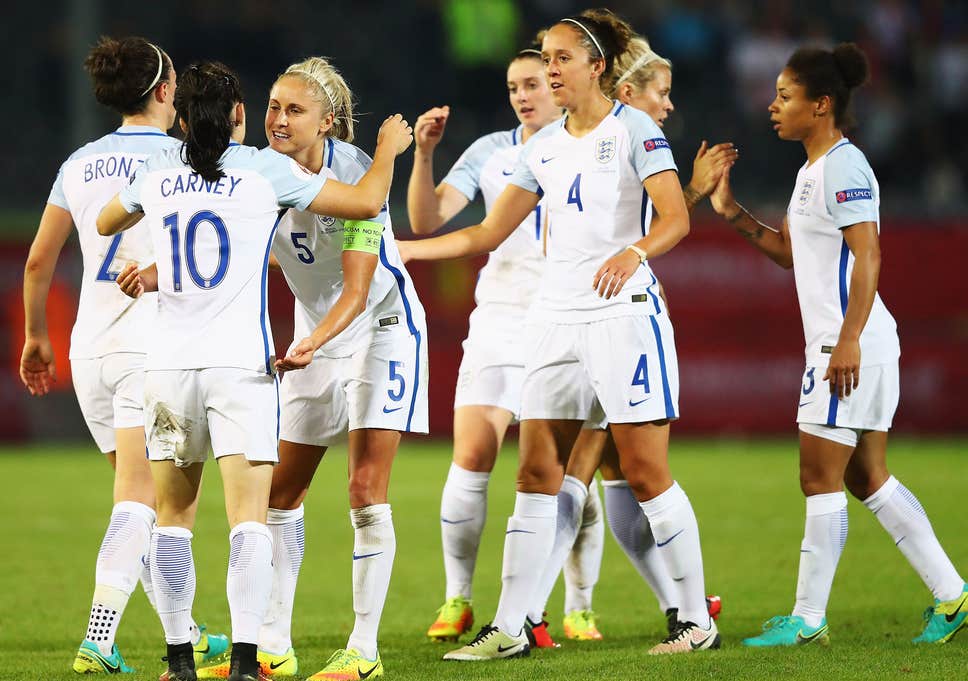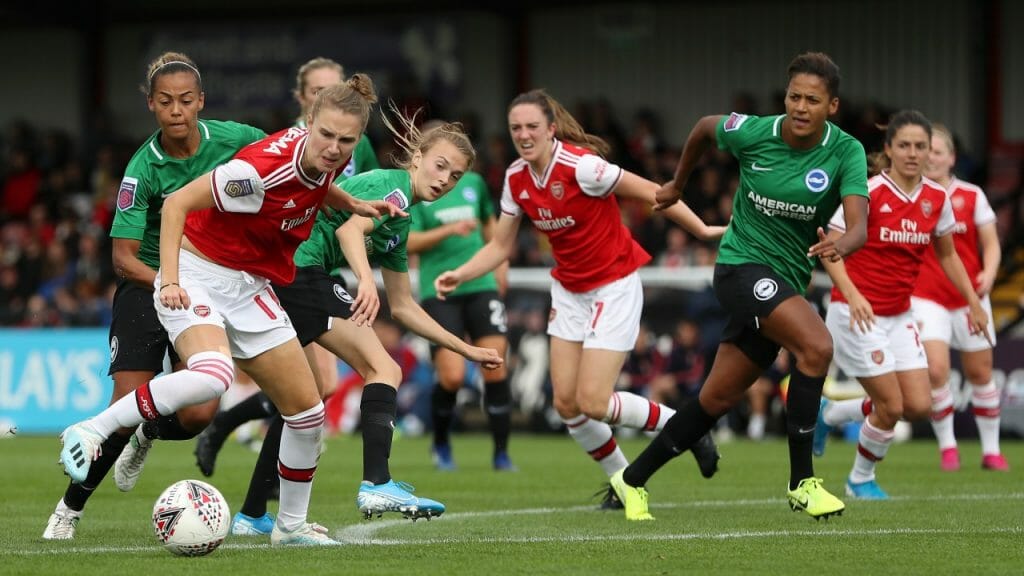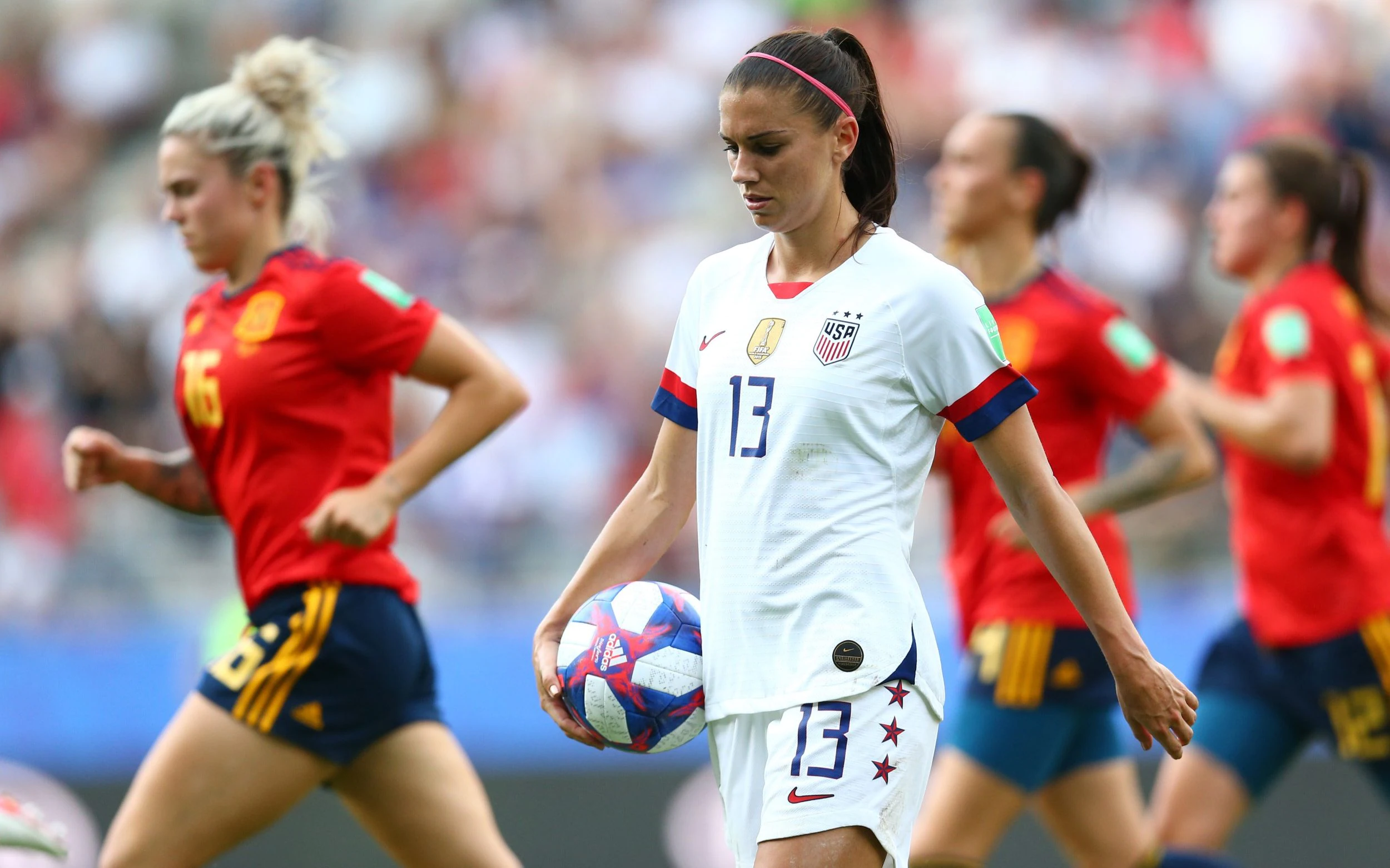Women’s football viewership numbers have been underperforming all these years largely due to lack of proper broadcasting. This is predicted to change from next season as BBC and Sky Sports grab the Women’s Super League broadcasting rights till 2024
A recent survey report following the broadcasting deal signed in March this year found that the lack of interest in women’s football is largely down to the lack of TV broadcasting of matches. The RunRepeat survey of 5000 football fans forecasted a drastic change in the numbers and expected a growth as high as 360% if women’s football is made easily accessible on television.
Although the idea of a European Super League has been scrapped now, there were plans of forming a women’s version of the tournament in the coming years too, which highlights the potential professional women’s football carries that needs to be utilised for the greater good of the sport as well as the fans.
The survey comes on the back of the £8m-per-season deal for the broadcast rights to the Women’s Super League, which will involve women top-flight matches being aired on BBC One and BBC Two and across the main Sky Sports channels.
KEY FINDINGS OF THE REPORT
The report highlighted the fact that currently less than 10% football fans in UK, EU and US watch their respective women’s leagues.

It further classified the stat into male and female viewers. It went on to forecast the increase in viewership and gave a gender based classification on how the TV broadcast will positively affect the data.
The survey gave a detailed analysis of the present and the future of women’s football in the UK, EU and the US with specific gender-based statistics.
THE NUMBER GAME
Let’s take a look at the key numbers revolving around women’s football-
- Women’s football should get a 296.7% increase in the UK, while in the EU the increase could be as high as 358.7% and 304.6% in the US with better access.
- 4% of UK male fans willing to watch if the leagues are on TV; as opposed to 27.1% of UK women fans. UK male football fans form 61.9% viewership of women’s football leagues in the country.
- In the US, the viewership is equally divided between two genders and in the EU, female fans form the majority of viewers. Interestingly, male football fans are more interested than female fans in women’s football in the UK. This doesn’t hold true for the US and the EU. In the US, the viewership is equally divided, and in the EU, female fans are more likely to watch women’s football than male ones.Male football fans contribute 61.9% of total numbers in the UK, but 46.5% in the EU.
- When we look at both genders separately, 9.6% of UK male fans and 5.9% of female football fans watch women’s league football. In the EU, 6.1% of male fans and 7% of female fans said that they watch women’s football leagues. In the US, this figure is 6.4% for both male and female fans.
- Overall, only 7.7% of UK football fans, 6.56% of EU fans, and 6.4% of US football fans watch women’s football leagues. As per the survey, 30.70% of UK football fans said that they would watch women’s leagues if they are live on TV. 30.07% of EU fans and 29.4% of US football fans answered the same. Once again the gender divide is visible in the UK, but not in the US. 34.40% of UK male football fans are ready to watch women’s leagues but only 27.10% of female fans show interest in watching women’s leagues in future. In the US, 29.60% of male football fans and 29.10% of female fans are interested in watching women’s football in the future.
- In the EU, 29.60% of male fans and 29.10% female fans are interested in watching women’s leagues if they are on TV.
- Looking at gender-specific numbers, the lowest increase is expected among UK male fans at 258%. This is down to the fact that a higher percentage of this demographic already watches women’s leagues. The numbers suggest that the highest increase should take place among EU male fans at 398%.

SURVEY ATTRACTS POSITIVE REACTIONS
“It’s no surprise to me, no surprise at all,” said Dr Beth Fielding Lloyd, principal lecturer in the academy of sport and physical activity at Sheffield Hallam University whose work includes research into media coverage of women’s sports. “The new broadcast deal is providing routine coverage and British audiences – male, female, football, non-football, whatever – will just come to expect that the sport is there and that it is now part of our sporting cultural landscape.”
She also went on highlight that people downplay the potential of women’s football naively as they don’t realise that its largely down to the lack of investments made.





